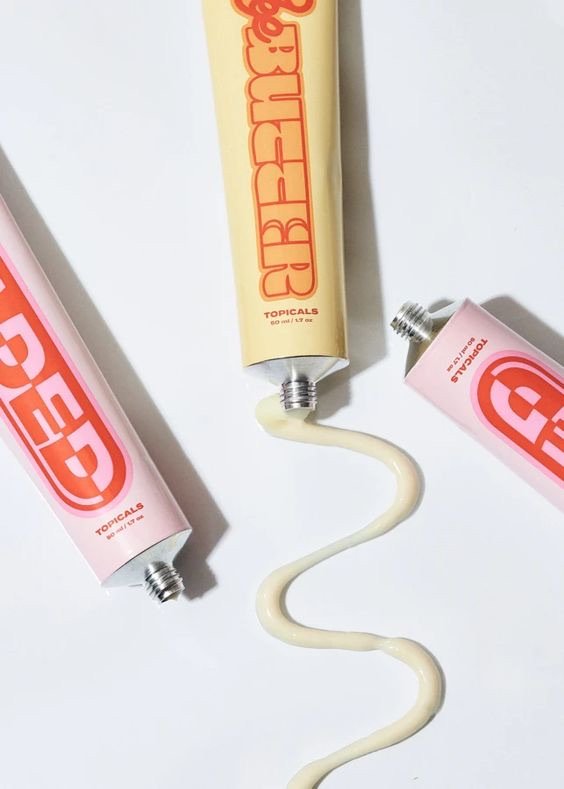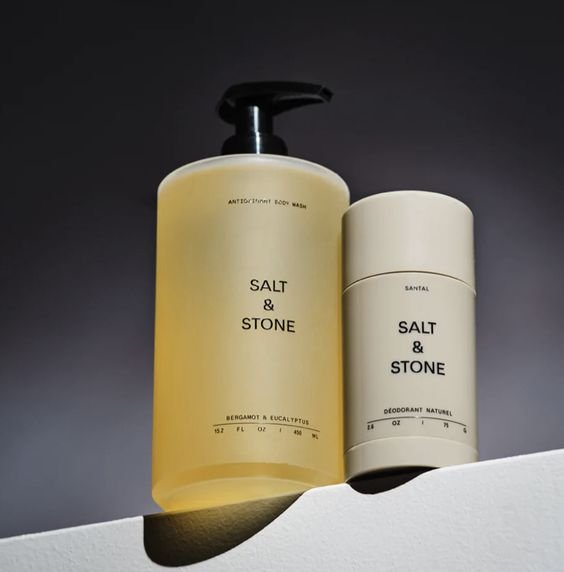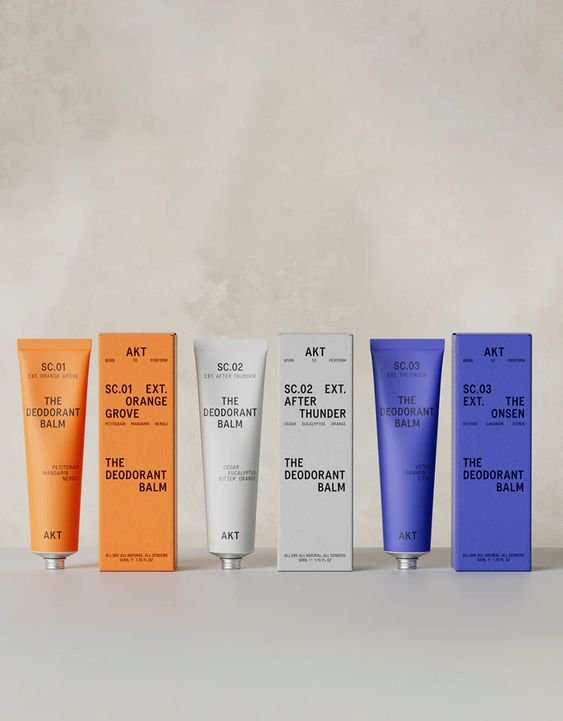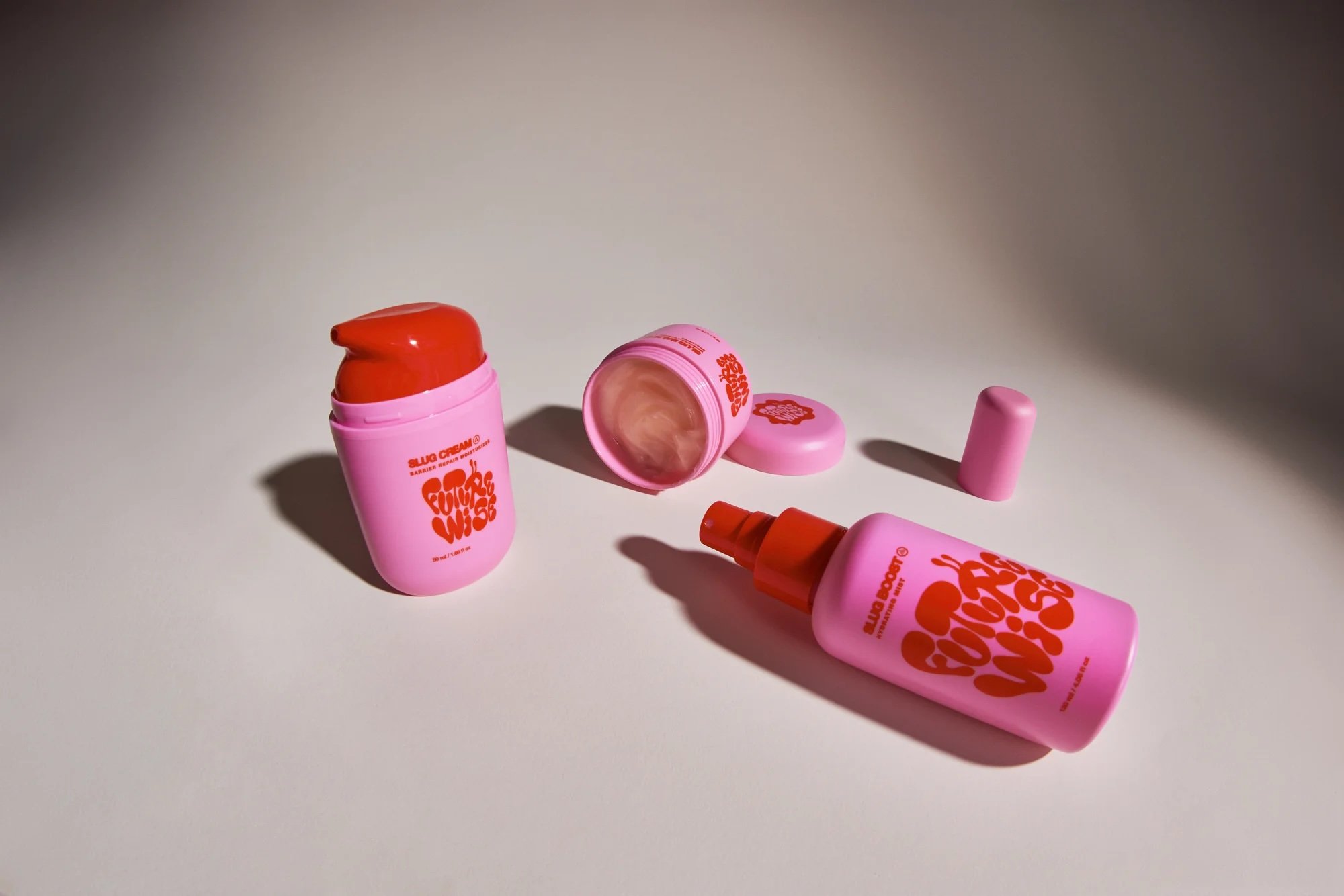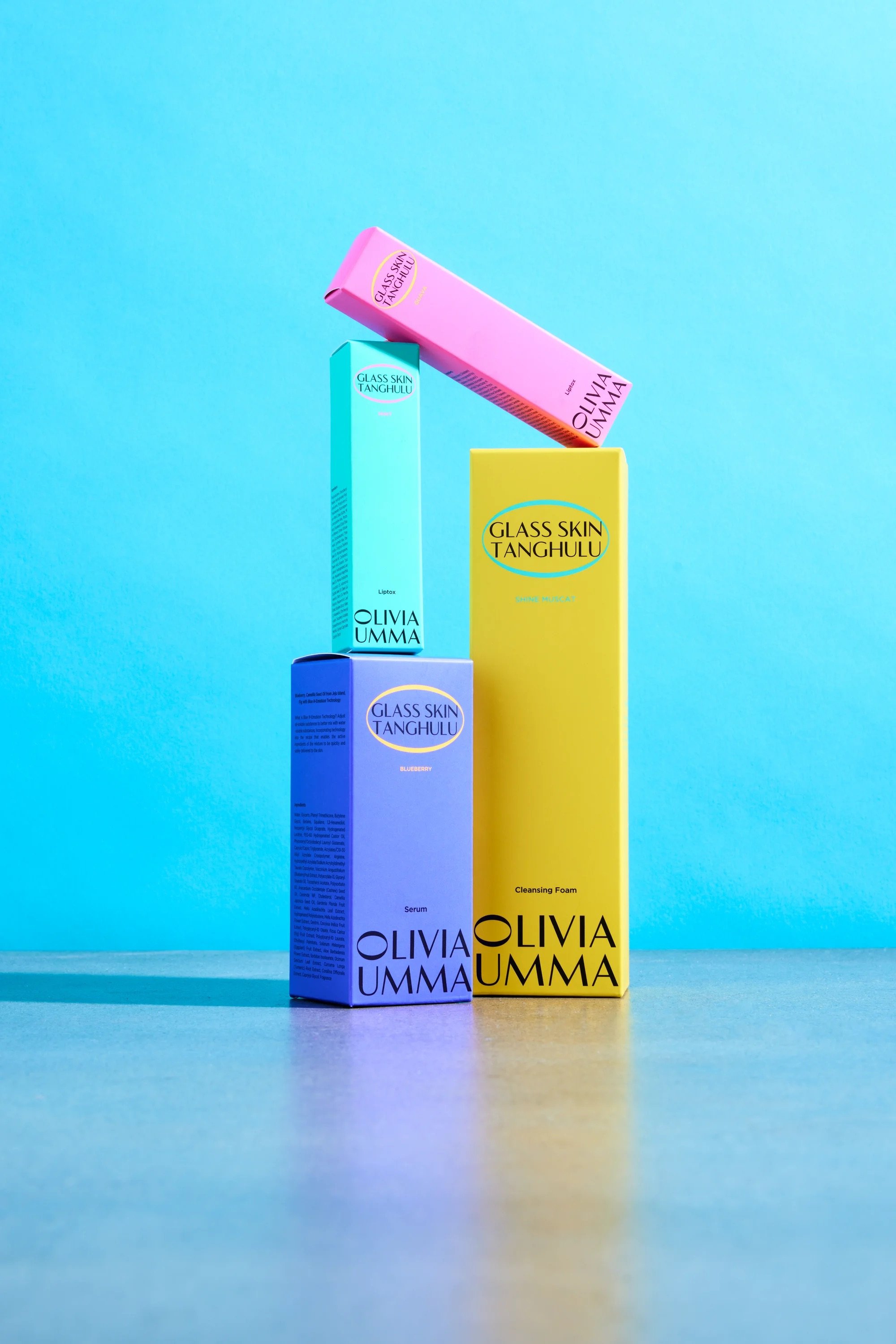Design & Branding in 2024: 7 Trends You Need to Know
Usually at the beginning of the year, we see a lot of “trends and forecasts” for the upcoming year. Now, I will shed some light on what I think the trends will bring, but also simply share some stuff and resources that I find to be on top of the minds of many creatives globally.
I've worked in fashion, product, and digital marketing for over 10 years, and I've also spent a good few years as a strategist at the design studio working with clients. I've been on both sides of the table, and I consider this my advantage and vaccine against being too biased. I understand how it is to be in a client's/brand's shoes (I'm one at the moment by running Selfnamed's platform and marketing) and also how it is to work for the client as a strategy advisor.
Below, I will share with you 7 theses and ideas I've learned or borrowed (always a good idea!) from creatives around the world. I consider these not simply as trends, but an overall way of thinking when it comes to design and creative process.
Let’s dive in, shall we?
Don't Build For The Masses
I could talk about this all day, every day.
If you're a startup founder aiming to establish a business, avoid targeting the Mass market. I collaborate with startup founders regularly, and a recurring theme I encounter is the aspiration to build a business for the masses. While this ambition is commendable, it often needs to be revised. The masses, contrary to popular belief, aren't a specific consumer set but rather a measure of quantity and volume.
Consider this perspective: the population comprises billions of individuals, each uniquely fitting into their worlds. Whether you're an aesthetic micro-influencer in New York or an insurance salesman in Paris, we are all motivated by various factors. The Mass market is a broad generalization of diverse behavioural and socioeconomic factors, akin to seeing what's understood when everything is blurry.
To succeed, you must establish a narrow and clear line of sight between you and your consumer. Understand their motivations, influences, beliefs, and desires. Take OffCourt's ad, for instance, which speaks to a specific type of audience with a clear message. Knowing your audience is crucial for the longevity of your brand, as many fail within the first year due to a lack of understanding.
OffCourt is a unisex personal care brand that creates performance products for active lifestyles.
Image credit: OffCourt
offcourt.com
Vacation creates a safe and clean sunscreen formula featuring the nostalgic smells of coconut, banana, and pool water.
Image credit: Vacation
vacation.inc/
Topicals makes skincare products designed to fight dryness, dark spots and discoloration associated with hyperpigmentation and Eczema-prone skin.
Image credit: Topicals, Adam Nagy
mytopicals.com/
As you embark on building your business, ensure you have a clear understanding of your target audience. Define that person, comprehend what moves and motivates them, and consistently address their needs, ignoring everyone else.
At Selfnamed, we believe in niche audiences. We are trying to serve the product range in all major categories so you can mix the product range in a way that sets you apart from others via branding and communication.
Less Is More
Prose makes customizable haircare and skincare with sustainable and clean ingredients.
Image credit: Prose
prose.com/
This design approach might contradict some others in this article, but it does not. I think design and branding is an expression language that brings brands together with their audience and as the audiences differ, branding also must differ.
This is not a trend, this is a stronghold of design thinking. Design in its purest form is functional – it serves some purpose. In branding, it serves the purpose of introducing your brand to the audience and helping them understand your brand better, and feel the emotions you want to bring out in people. Packaging design serves the purpose of helping the audience to distinguish your product from others, as well as to give clear information about what the product contains.
It is much easier to communicate with fewer elements and less “noise”, more “white space”. And people love it. Do you want to know why? The same reason – people love simplicity. The statement is clear – I (the brand) am not pushing, I'm not telling you how to feel, and my products will not look “ugly” in your bathroom.
Act + Acre creates clean, plant-based hair care products using the cold process method.
Image credit: Act + Acre
actandacre.com/
SALT & STONE makes high-performance botanical skincare for active bodies including deodorants, sunscreens, and other skincare products.
Image credit: SALT & STONE
saltandstone.com/
In User Experience design, there is a saying/approach – “Kill the features”. With minimalism, you will not waste the precious brain cells of your customers with too much information.
In the world of skincare packaging, simplicity most of the time will win the day. Clean lines, harmonious colour palettes, and an emphasis on purity redefine.
AKT makes all natural and vegan deodorant with premium fragrances using recyclable, plastic-free packaging.
Image credit: AKT
aktlondon.com
NUORI was launched by Jasmi Bonnén in 2015 with a philosophy rooted in freshly blended skincare
Image credit: NUORI
nuori.dk
Osea makes a variety of skincare products featuring seaweed as an active ingredient.
Image credit: Osea
oseamalibu.com/
Our commitment to minimalism extends beyond design; it extends to our responsibility to the planet. At Selfnamed, we are using recyclable packaging, and there are 20+ packaging types. Recyclable materials aren't just trends; they are our pledge to a positive environmental impact.
Coming soon: 400 ml pump for Hair & Body Care products (on the left) and 30 ml & 50 ml airless for Face Care products (on the right).
Vibrant Colour Schemes & Bold Shapes
This can go as an opposite to minimalism, but it can also go hand in hand with it.
Graphic design has evolved together with digital technologies, and we can’t deny that the digital environment has a massive impact on classic design disciplines.
Gradients, loud display fonts, tribal illustrations, stickers, and many other elements have made their way into skincare products and are here to stay. If you feel bold enough and know that your audience will love it – go for it, and you will stand out in the market.
Make it pop!
Good Weird sells genderless, multi-purpose beauty products.
Image credit: Good Weird
goodweird.com
Futurewise offers a 3-product skincare line focused on the practice of slugging.
Image credit: Futurewise
futurewise.world
OLIVIAUMMA makes Korean-made clean beauty products.
Image credit: Josh Eskridge
https://oliviaumma.com/
ZVYK creates easy, convenient skincare formulated in South Korea.
Image credit: ZVYK
myzvyk.com/
No More Boring Logos
A few years ago, there was a trend where a lot of the fashion brands rebranded themselves to very clean logos. Most of them used Sans Serif and Grotesques typefaces and monochrome colour palettes. At the time, it seemed like a great idea – your product and branding are very colourful and visually rich, and you need a brand identity that is easy to use in this noisy environment. It made sense then, and it still kind of does now, the only issue with this strategy is that if everyone is doing it, your brand does not stand out anymore.
In 2023, something started to shift again. Burberry’s rebrand caught my eye. Burberry was one of the first big fashion houses to introduce a minimal, Sans Serif typeface back in 2018, but it's just gone back to its roots with a new “archive-inspired” Sans Serif look. And the company has also resurrected its 1901 “Equestrian Knight Design” (EKD) symbol for good measure. It’s more than a departure from clean aesthetics; it’s an intelligent shift.
Source: Burberry
My guess is that Burberry will be followed by other houses such as Balmain, Celine, Saint Laurent, Balenciaga, etc. All of them displayed then – and still do – the same minimalist identity, with a name like a monolith, a primal and timeless work. Thus, loudly asserting their existence, requiring neither particularity nor ornamentation to be recognized as a monument in the world of luxury.
As the Fashion and Skincare industries are always philosophically very close, many skincare brands also explore rich, sometimes vintage, illustrative work in their logos and across brand identity.
ORRIS was founded in Paris by Kenneth Koo and Lani Le Berre to elevate a simple soap bar into a luxurious and sensorial cleansing experience. Made with the highest quality plant-derived ingredients, ORRIS products are designed to appeal to the senses: sight, smell, and touch.
Image credit: ORRIS
orrisparis.com/
Artemis makes skin and coat care products for dogs.
Image credit: Artemis
hiartemis.com
NERRĀ formulates ancient bath and body products made for modern living.
Image credit: NERRĀ
nerra.com/
MARGIN offers contemporary care products starting with a lightweight moisturizer.
Image credit: MARGIN
margin.global/
Neighborhood Botanicals makes natural skincare for glowing skin.
Image credit: Neighbourhood Botanicals
neighbourhoodbotanicals.com/
Utilitarian Design
Utilitarian Design can be defined as a design that emphasizes utility (aka practicality) over other values.
Historically, the approach comes from architecture and interior design as well as automotive and hardware industries. But nowadays, we see more and more brands in the skincare and fashion industries adopting practicality.
This design approach is also very widely used in Pharmaceutical skincare and wellness products. You can see clear signs of this in Aesop, The Ordinary, Typology and many others.
ARKET is a modern-day market and lifestyle destination offering essential products for men, women, children and the home, as well as a New Nordic vegetarian café.
Image credit: ARKET
arket.com
Arket is another brand utilizing this straight-to-the-point design approach. Be practical, useful, or don't be at all. There is so much simplicity in the product itself and such a simple approach to how to use and when to apply the products.
The Ordinary crafted functional, affordable clinical skincare with integrity
Image credit: The Ordinary
theordinary.com
Aesop offers a variety of skin, hair, and body care formulations from quality ingredients.
Image credit: Aesop
aesop.com
Typology creates vegan and cruelty-free skincare products to create transparent products.
Image credit: Typology
global.typology.com/
COSRX creates prescription grade skincare products.
Image credit: COSRX
cosrx.com/
Real & “Ugly” Content
Algorithms love it, Gen Z loves it, and as this is the most real and “most unprofessional” form of design/content out there, everyone kind of understands it.
I'm not a huge fan of this design-wise, but OMG this works. People tend to love real crime docuseries as much as they love to see untouched “before-after” skin problem images.
Image Credit: Topicals
https://mytopicals.com/
And this is not only about product content but simply real-life content. This is Instagram vs TikTok. This is HBO vs Real Housewives Of Miami.
There are plenty of articles about why this trashy “next-door content” has become so popular in our lives, but the truth is – we, as humans, understand simple things. Our visual “system” got very polished when Instagram came out and glitches and bugs started to appear. People understood that a lot of the design and content is fake, unrealistic, photoshopped, silicon, and plastic. This creative approach is like a vaccine to a perfect life, content, and design.
To whoever runs the BOSE TikTok, you deserve a raise! ✨ They are a great example of a global company adapting to the generation today and learning to generate attention with new consumers.
Worth mentioning:
Fenty Beauty TikTok
Crocs TikTok
and more brands killing it on TikTok.
So go out there and ⚠️ be real ⚠️. Your vibe will attract your tribe.
Artificial Intelligence (AI)
Oh yes, of course, we have to talk about AI and how it can be used in design in 2024.
To be clear, I’m “team AI” and I honestly believe that there are plenty of skills that can be and/or will be covered with artificial help.
The question here is – is the design or branding one of those replicable skills? And the answer for me is no, not yet at least. In a few years maybe on some level, but let’s remember that image-generation AI models and language models have been created based on what humans have created for the last two millennia. This means that on very rare occasions, AI creates something new or innovative. Most of the time, AI-created artwork and information is more like a ripped magazine collage (remember, we used to do that as kids in school). The work looks good, and you can call it creative and contemporary, but it lacks originality and quality of work. For the foreseeable future, I still see it as a separate category of design and art.
I don’t want to sound too pessimistic, so here are some things I use AI tools for, and I urge you to do it too.
Packing and stacking information. Drop all your notes in the chat and let it do its language modeling job.
Create ideas for branding, brand names, copy, etc. You will still need to adjust them, but sometimes when there is a creative block it is useful to use language-based models to move forward.
Image generation tools. Yes, I would still urge you to use it at least for inspiration and playing around.
Photography editing tools. Delete, rearrange, and add elements to your images. Professionals have done this manually for years. Now it is available to anyone for free forever. Use it.
And here is an idea for you generated by me while writing this. Create a brand where everything (name, logo, photos, etc) is generated by AI. It could be something.
Something To Take Home:
Don't build for the masses, create your own story over usual conversations. Authenticity has become the heartbeat of brand narratives. Through intricate illustrations and embossed motifs, we aim to transcend the transactional. Unboxing becomes an experience, a story unfolding beyond the product itself.
Branding is about differentiation and preference. Customers have an emotional connection to brands. If there is no connection, your brand is a commodity.
When everyone ZIGS, you ZAG. When everyone is going to one direction, you go in the opposite. Following the crowd sometimes can be misleading.
Borrow and adapt. This is how the industry evolves. Like Steve Jobs said, “Creativity is just connecting things. When you ask creative people how they did something, they feel a little guilty because they didn't really do it, they just saw something. It seemed obvious to them after a while. That's because they were able to connect experiences they've had and synthesize new things.”
Trust Creatives. One thing I can say for sure – trust the creatives. If you have chosen a designer, agency, or a photographer based on your best abilities and budget, then trust them. You can challenge them, but let them challenge you back. You are both working for the same goal.
How To Start Your Own Skincare Line Using Selfnamed
Selfnamed is here to help create your own skincare line by making the process as simple and seamless as possible. As soon as you decide on your ideal customer and product range, there are only a few simple steps to take:
Select product sample sets. You can choose from more than 30 high-quality, organic or natural certified skincare products made in Northern Europe.
Add your style. Selfnamed offers an easy-to-use design studio to create labels and packaging. You can work with pre-made print-ready templates or create your design from scratch. You can also choose our design service.
Start selling your products. There are no minimum orders, meaning you can easily adjust the volume to your needs.
Before making a custom order, we recommend looking at our sample set selection. These sets contain curated product lines for different skin types, letting you choose the best products for your brand. This way you can test the products — their consistencies, textures, fragrances, as well as packaging quality.
There are the basic steps on how to start a skincare line from the comfort of your home. Best of luck with your new endeavour!
















